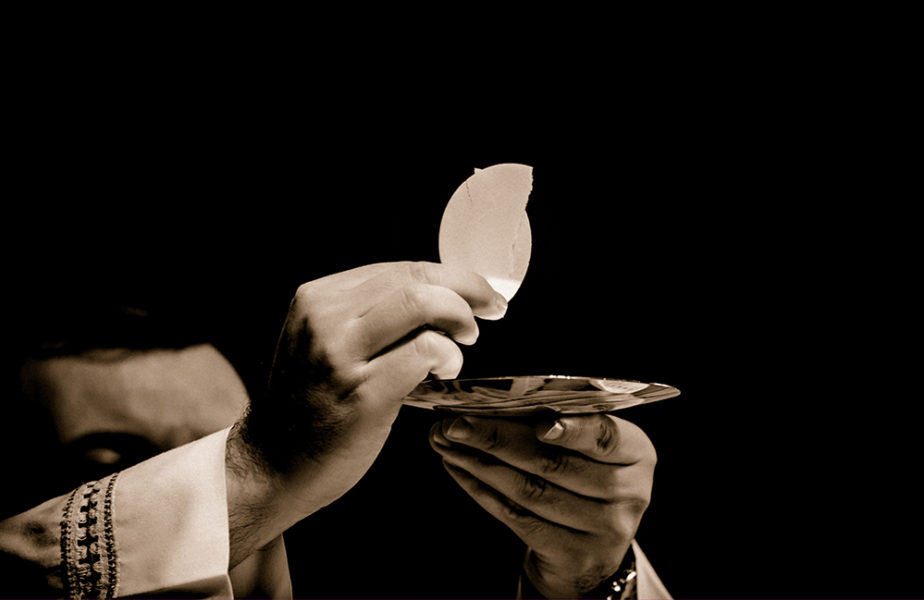Weird ways my mind works. When I read/hear the awesome fact that Jesus is risen, having this in mind, I think it is ironic that in the Latin Rite for the Eucharist, the bread is unleavened.
I also find it interesting that the practice of using unleavened bread arose in the West in the 9th century.
… the change to unleavened bread. Alcuin and his pupil Rabanus Maurus are the first indisputable witnesses to this new practice, .. which spread only very slowly. The increased reverence for the Sacrament probably helped to introduce the use of the pure white wafers which could be so much more easily broken without worry about crumbs. (Joseph Jungman, S.J. “The Mass of the Roman Rite: Its Origins and Development”)
From the Catholic Encyclopedia (1917):
but leavened bread in the Eastern Church, except among the Maronites, the Armenians, and in the Churches of Jerusalem and Alexandria, where it is unleavened. It is probable that Christ used unleavened bread at the institution of the Blessed Eucharist, because the Jews were not allowed to have leavened bread in their houses on the days of the Azymes.
I was surprised at this history since I assumed that unleavened bread would have been the norm since this is what Jesus likely used at the Last Supper and that it has a greater sign value in relation to the institution of the Jewish Passover and the Exodus. I seems, at least in the West, this development was tied to the fact that in the early Church there was no manufacturing of specific Eucharistic hosts and thus commonly available bread was used.
In Lawrence Feingold’s, “The Eucharist”:
In the Latin rite, the bread must be unleavened, according to CIC, canon 926. This practice reflects the fact that Christ instituted the Last Supper on the first night of Passover, and so He would have used unleavened bread. In the Eastern tradition, however, leavened bread is used.
St. Thomas poses the question in the Summa of Theology as to whether the matter for the Eucharist is leavened or unleavened bread, and responds as follows:
Two things may be considered touching the matter of this sacrament namely, what is necessary, and what is suitable. It is necessary that the bread be wheaten, without which the sacrament is not valid, as stated above. It is not, however, necessary for the sacrament that the bread be unleavened or leavened, since it can be celebrated in either.
But it is suitable that every priest observe the rite of his Church in the celebration of the sacrament. Now in this matter there are various customs of the Churches: for, Gregory says: “The Roman Church offers unleavened bread, because our Lord took flesh without union of sexes: but the Greek Churches offer leavened bread, because the Word of the Father was clothed with flesh; as leaven is mixed with the flour.” Hence, as a priest sins by celebrating with fermented bread in the Latin Church, so a Greek priest celebrating with unfermented bread in a church of the Greeks would also sin, as perverting the rite of his Church. Nevertheless the custom of celebrating with unleavened bread is more reasonable. First, on account of Christ’s institution: for He instituted this sacrament “on the first day of the Azymes” (Matthew 26:17; Mark 14:12; Luke 22:7), on which day there ought to be nothing fermented in the houses of the Jews, as is stated in Exodus 12:15–19. Secondly, because bread is properly the sacrament of Christ’s body, which was conceived without corruption, rather than of His Godhead, as will be seen later (76, 1, ad 1). Thirdly, because this is more in keeping with the sincerity of the faithful, which is required in the use of this sacrament, according to 1 Corinthians 5:7: “Christ our Pasch is sacrificed: therefore let us feast … with the unleavened bread of sincerity and truth.”
However, this custom of the Greeks is not unreasonable both on account of its signification, to which Gregory refers, and in detestation of the heresy of the Nazarenes, who mixed up legal observances with the Gospel

